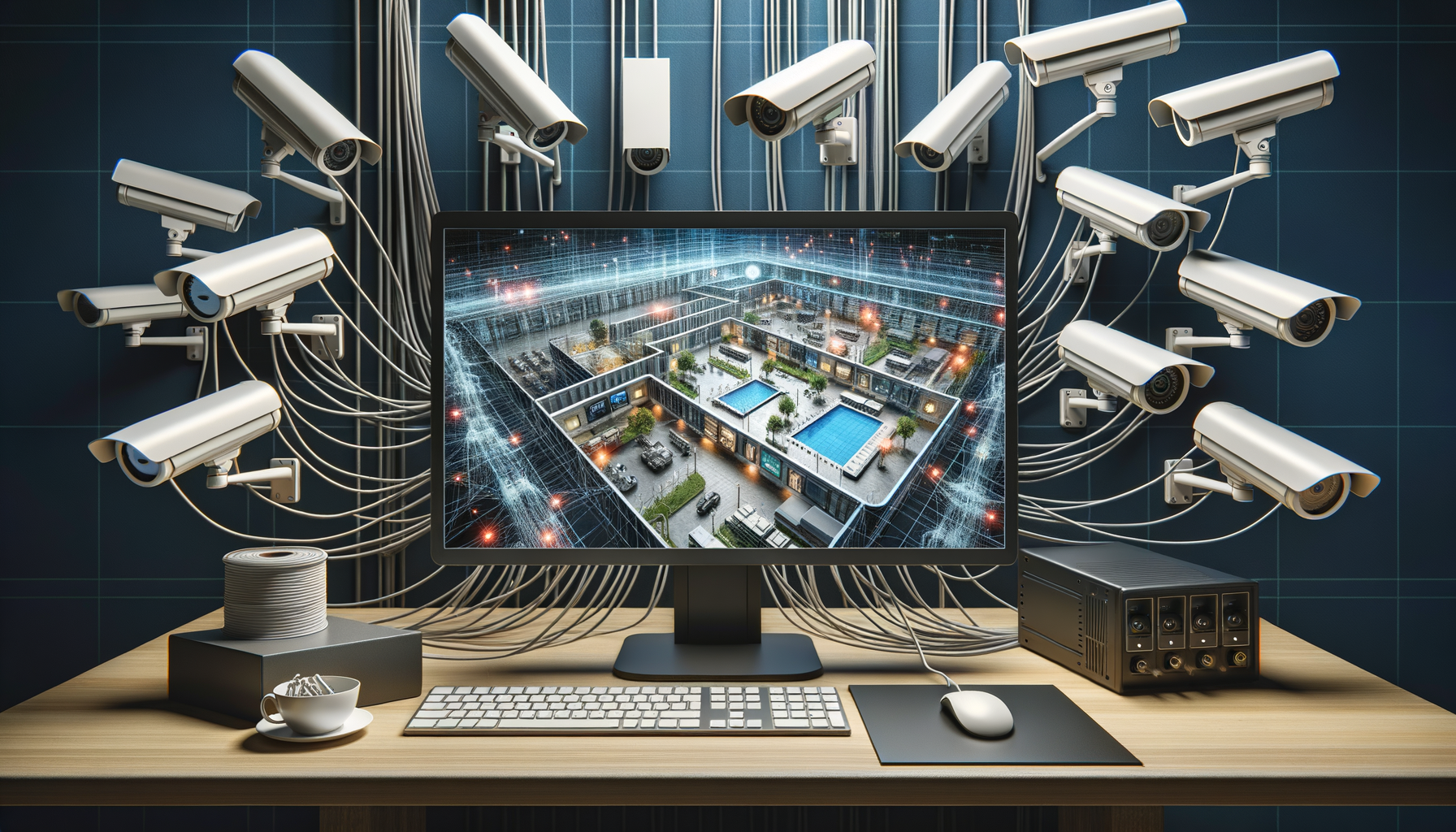Key Insights on Camera and Monitoring Solutions
- Importance of monitoring birds closely for safety and training progress.
- Different types of cameras suited for falconry, including stationary and mobile options.
- Benefits of using high-resolution cameras for clear, detailed observations.
- Wireless camera systems provide flexibility and ease of access.
- Night vision capabilities help monitor birds in low-light conditions.
- Utilizing waterproof cameras ensures durability in various weather conditions.
- DVR systems can record footage for later review and analysis.
- Finding a balance between camera performance and budget is crucial.
- Proper placement of cameras enhances the effectiveness of monitoring.
The Magical Pair: Cameras and Monitoring for Falconry Enthusiasts
Imagine you’re in the heart of Ireland, surrounded by the lush green landscapes and majestic castles. You’re like a skilled falconer, training your trusted bird of prey. Now, think about how much easier your job would be if you had an enchanted pair of binoculars that allowed you to see everywhere your falcon flies, even when it soars out of sight! Sounds amazing, right? That’s what cameras and monitoring systems can do for you when you’re involved in the thrilling world of falconry.
At Learn Falconry, we understand just how important it is to keep a close eye on your feathered friend, ensuring their safety and observing their behavior closely. In this article, we’ll delve into the fascinating world of cameras and monitoring systems, discovering why they are a game-changer for both beginner and seasoned falconers. We’ll explore the coolest gadgets to help you capture every spectacular moment, just as if you had those magical Irish binoculars.
So, keep reading to learn about the essential technology that can transform your falconry experience from good to legendary!
The Importance of Falconry Cameras and Monitoring
Monitoring falcons is a critical aspect of modern falconry, ensuring the health and safety of these magnificent birds. At Learn Falconry, we understand the need for effective falconry surveillance, and the use of specialized falconry cameras has become increasingly popular among enthusiasts around the world.
Why Use Falconry Cameras?
Falconry cameras provide a unique perspective on the daily activities and behavior of falcons. These devices are essential tools for tracking and monitoring falcons in various environments. Here are some key reasons why falconers should invest in falconry cameras:
- Behavioral Observation:
Monitoring falcons with cameras allows falconers to observe their birds’ natural behaviors without interference. This is essential for understanding their habits, identifying potential issues, and tailoring training methods accordingly. To learn more about basic training techniques, visit Basic Training Techniques. - Health Monitoring:
Falconry cameras can help detect signs of illness or injury early on. By reviewing footage, falconers can spot changes in behavior or appearance that may indicate health problems. For more tips on maintaining falcon health, check out our section on Basic Health Care for Falcons. - Security and Safety:
Falconry surveillance is an excellent way to ensure the safety and security of your falcons. Cameras can help monitor the bird’s environment for potential threats and prevent theft. For essential equipment to keep your falcons safe, visit Falconry Equipment.
Types of Falconry Cameras
There are various types of falconry cameras available, each serving different purposes:
- Static Cameras:
These are often placed in strategic locations around the falcon’s habitat. They provide a wide-angle view of the area, capturing the bird’s movements throughout the day. - Body-Mounted Cameras:
These small cameras can be attached to the falcon’s body, usually on the back or chest. They offer a first-person view of the bird’s flight and hunting activities, providing invaluable insights into their behavior. For more on hunting techniques, explore Hunting with Falcons. - Mobile Surveillance Units:
These are more advanced systems that can be remotely controlled to follow the falcon. They are useful for training sessions and competitions. For tips on preparing for falconry competitions, read Preparing for Falconry Competitions.
Integrating Technology in Falconry
At Learn Falconry, we emphasize the importance of integrating modern technology into traditional practices. The use of GPS trackers alongside falconry cameras has revolutionized how we monitor and care for falcons. This technology not only improves training outcomes but also aids in conservation efforts by collecting valuable data. For more on how technology is transforming falconry, visit Innovations in Falconry Technology.
Benefits of Falconry Surveillance
Implementing falconry surveillance has numerous benefits:
- Enhanced Training:
By reviewing footage from training sessions, falconers can identify areas for improvement and adjust their techniques accordingly. For advanced training methods, visit Advanced Training Methods. - Improved Safety:
Continuous monitoring ensures the falcon’s environment is safe and secure, reducing the risk of accidents and injuries. For more on safety equipment, check our page on Safety Equipment for Falconry. - Better Health Management:
Regular observation through cameras helps in maintaining the bird’s health by early detection of any issues. For tips on health care, see Preventative Health Care for Falcons.
In conclusion, using falconry cameras and surveillance is indispensable for effective falconry practice. It not only enhances the training and management of the birds but also contributes significantly to their safety and well-being. To explore more about our educational resources and equipment, be sure to visit our comprehensive guides on Falconry Equipment and Training Techniques.
Exploring Falconry Cameras and Monitoring in 2024
Falconry cameras and monitoring technology have greatly advanced, offering exceptional tools for tracking and observing falcons. Here’s a deep dive into the specific aspects that make these technologies so effective in 2024.
Resolution and Sensitivity
Falconry cameras nowadays are known for their high-resolution and sensitivity. They use advanced technological components such as EMCCD (Electron-Multiplying Charge-Coupled Device) sensors. These sensors are particularly beneficial for capturing detailed images even in low-light conditions, making them perfect for both day and nighttime monitoring.
Camera Output
Typically, falconry cameras are equipped with a standard CameraLink output. This feature allows for high-speed data transfer, making these cameras versatile for various applications, including:
- Surveillance
- Astronomy
- Hyperspectral imaging
Having a reliable CameraLink output ensures that the high-quality footage is transmitted efficiently, without lag or data loss.
Frame Rate and Resolution
The frame rate of these modern cameras can reach up to 30Hz. This means that they can provide a smooth, continuous stream of video, offering a clear and detailed look at the falcon’s behaviors and environment.
| Specification | Detail |
|---|---|
| Resolution | High |
| Sensor Technology | EMCCD |
| Frame Rate | Up to 30Hz |
| Output | CameraLink standard |
Camera Placement
Strategic placement of cameras is essential for effective monitoring. Typically, cameras are placed at least one meter away from the nest. This distance allows capturing a wide view while ensuring minimal disturbance to the falcons. Additionally, static cameras often include infrared lighting, enhancing visibility during nighttime.
Streaming and Updates
The latest falconry cameras provide sharper images and real-time streaming. These feeds can significantly improve the engagement and learning experience for observers and researchers alike.
Community Science Programs
- The American Kestrel Partnership (AKP) has integrated its community science program with Cornell Lab of Ornithology’s NestWatch. This collaboration ensures streamlined data management and wider accessibility for researchers and enthusiasts.
- Community science programs play a crucial role in collecting valuable data on falcon populations and behavior, aiding in conservation efforts.
Monitoring Methods
Different methods are employed to monitor falcon populations and activities. One approach involves tracking the regional totals of California least tern colonies during their nesting season, which spans from March to September, peaking in May and June.
Banding and Data Collection
Banding is an integral part of monitoring falcon populations. This process includes attaching bands to the chicks, aiding in the tracking of their movements and monitoring their health.
| Activity | Description |
|---|---|
| Banding | Attaching bands to track movements |
| Data Collection | Gathering measurements, weights, etc. |
Conservation Efforts
Conservation efforts have been pivotal in monitoring and managing local falcon populations. Although Peregrine Falcons were once endangered, these ongoing efforts have spurred significant recovery. Organizations involved in falconry must report raptor acquisitions and dispositions to maintain accurate records and comply with regulations.
In summary, the advanced technologies and systematic approaches used in falconry cameras and monitoring provide rich data and insights into falcon behavior and conservation efforts.
Key Insights on Falconry Cameras and Monitoring in 2024
Monitoring falcons has become more sophisticated and efficient in 2024. With advanced technologies like high-sensitivity and high-resolution falconry cameras, we can now capture detailed images even in low-light conditions. These cameras are strategically placed at least one meter away from nests, offering a comprehensive view of falcon activities using infrared lighting for enhanced visibility. High-speed CameraLink outputs and frame rates up to 30Hz ensure that we get smooth, detailed footage of these incredible birds.
As for monitoring methods, we track regional totals and nesting seasons to get a clear picture of falcon populations along various coastlines. Banding and data collection play a crucial role in understanding falcon development and dynamics, while our conservation efforts ensure these majestic birds continue to thrive. Community science programs like the merger of the American Kestrel Partnership with Cornell Lab of Ornithology further bolster our research and data management efforts.
In summary, the integration of cutting-edge technology and dedicated conservation work has greatly improved our ability to monitor and protect falcon populations, ensuring these magnificent birds are well cared for and tracked in their natural habitats.



